We recently took a guided tour of the Syquia Mansion in Vigan city, the stately home that used to be the residence of the Philippines’ 6th president, Elpiidio Quirino. It is now a museum that is open to the public with an entrance fee of 75 pesos.
Built in 1830, the two-storey Syquia Mansion showcases the combination of Filipino Spanish architecture constructed with stone and wood. It occupies almost one block of Vigan city. It depicts the lifestyle of the wealthy and prominent Filipinos in those days.
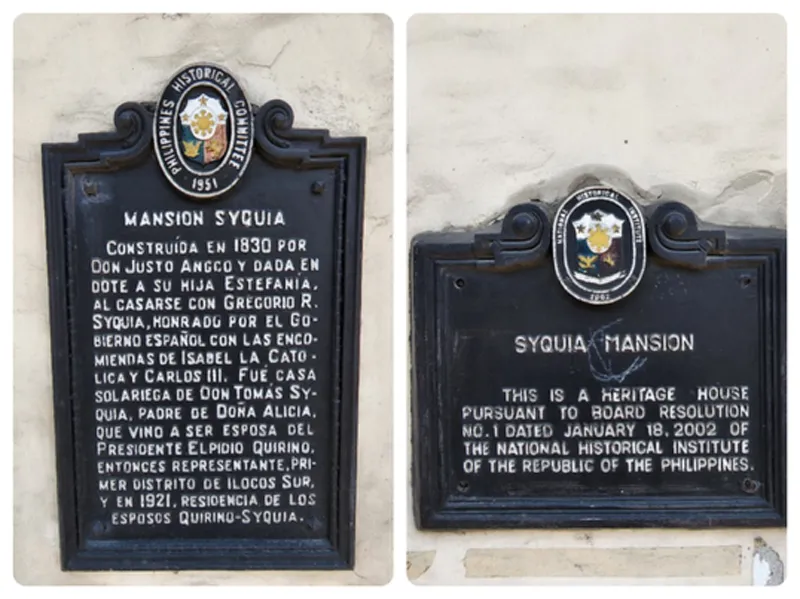
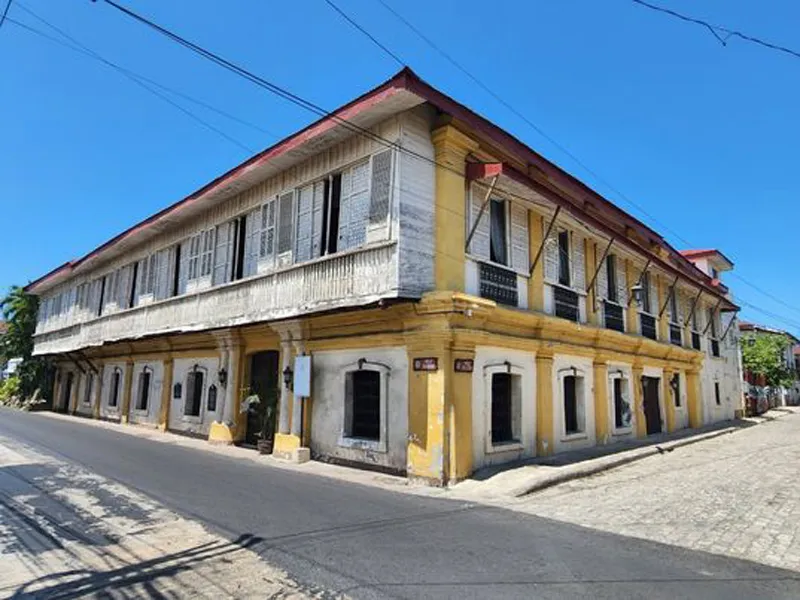

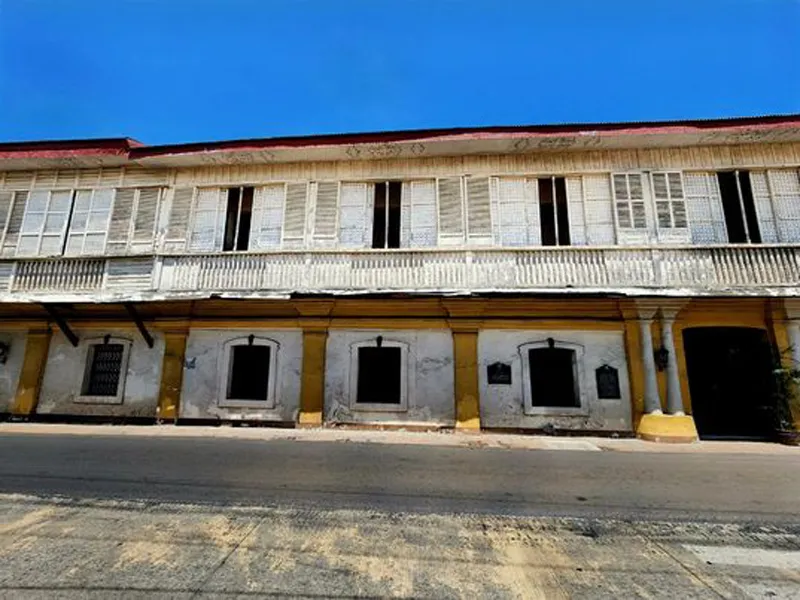
The door opens to the zaguan where the restored birlocho (black horse-drawn carriage) was parked. This is also the space or lobby leading to the stairs going to the upper floor.
The birlocho was the mode of transportation in that era, especially among the upper class. It has a wooden body, a leather top, and a driver’s seat, with lamps on each side to illuminate the night. It has leather seats for two passengers, four wheels, and a shaft mounted on a horse.

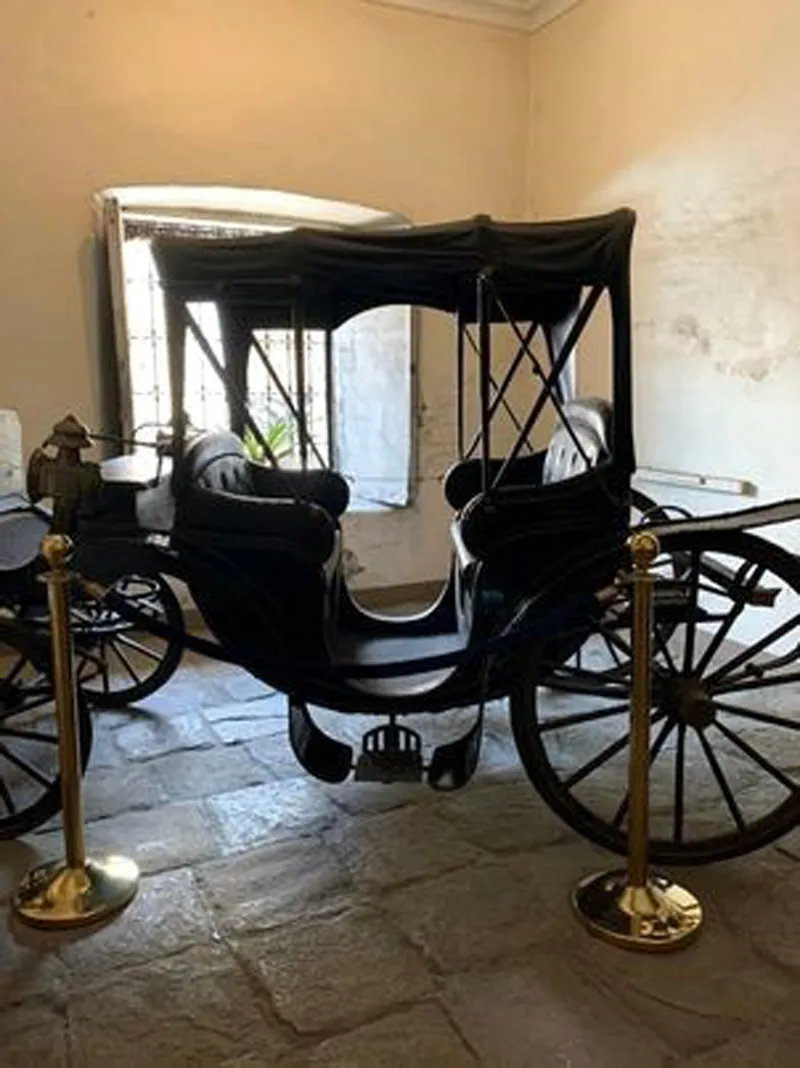
The foot of the stairs is a waiting area before the guests are allowed to go up. There are peepholes strategically placed on the floor and walls for the household to check if a visitor is either allowed to go up or turned away. Those allowed to go up were further grouped into VIPs or prominent people and the less important ones. Talk about discrimination!
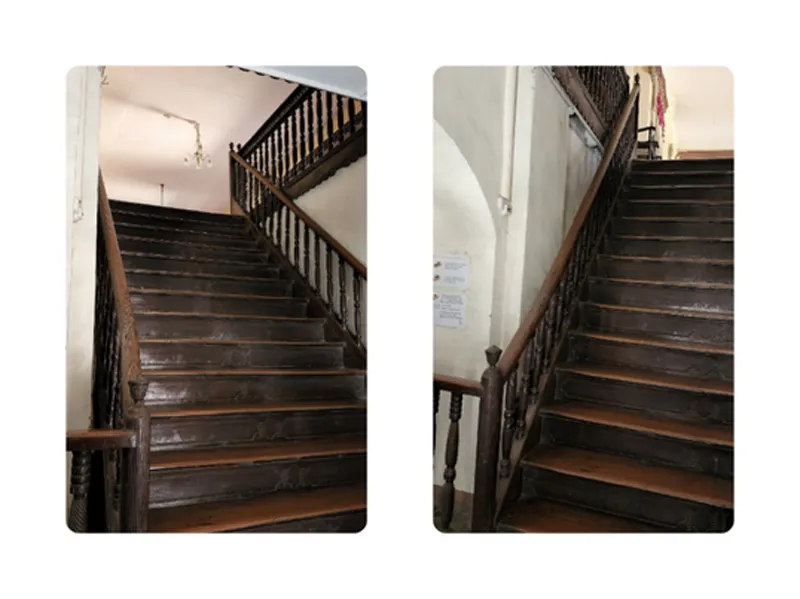
The not-so-important guests were ushered into the ante sala where they will wait for the master of the house to receive them.
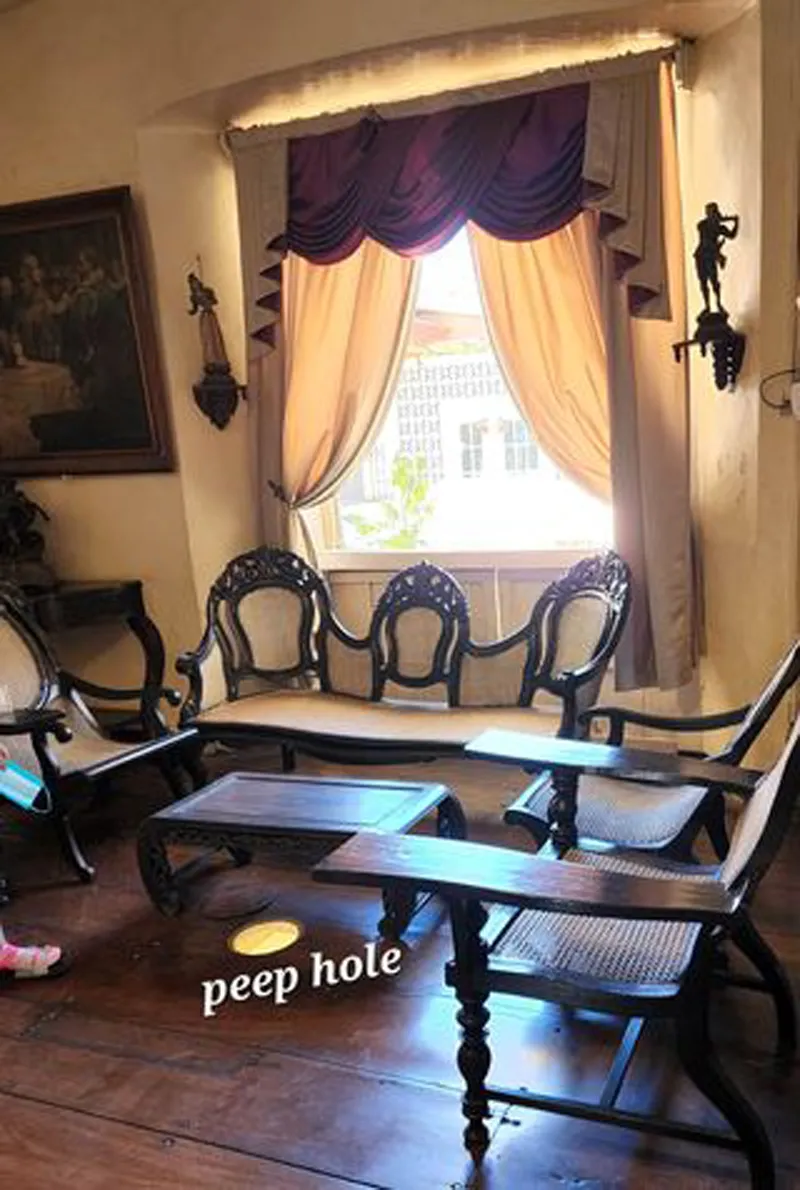
The VIPs were led to the main sala where they were welcomed in a more comfortable setting, with cushioned sofas. They were also served refreshments by the servants from the volada section which is behind the main sala.
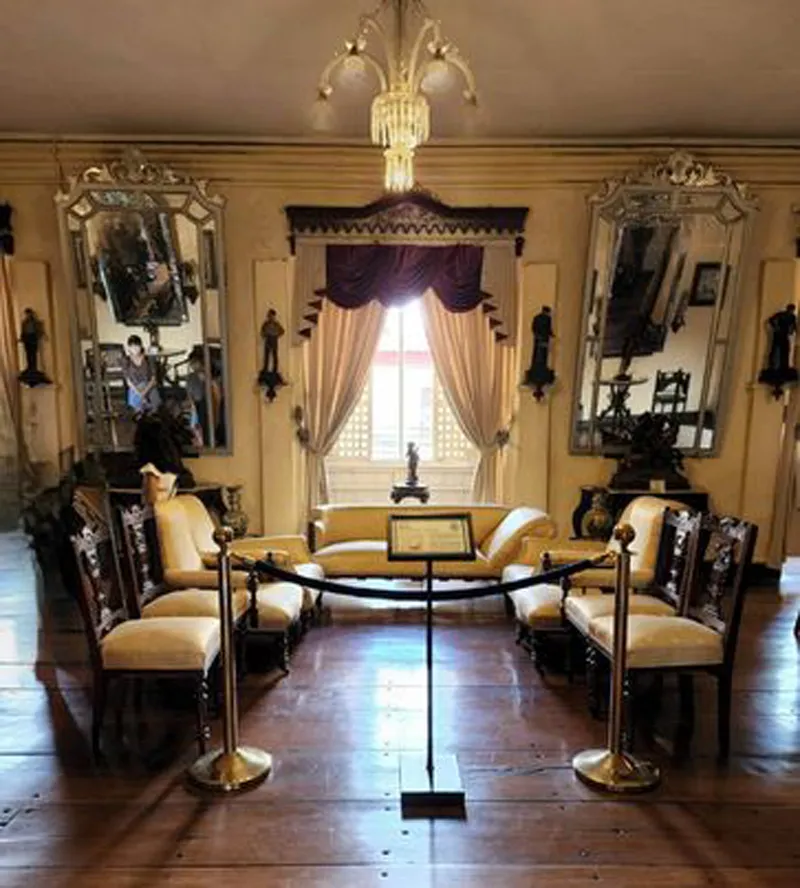
This narrow hallway is called the volada, where the servants moved from room to room, carrying drinks and foodstuffs. They were not allowed to be seen by the visitors and walked barefoot to avoid noise.

Historic and Opulent Artifacts and Artworks
The second floor is a display of the opulence and wealth of the Syquia family. According to our guide, the museum’s most valuable artifact is this Ming Dynasty vase wounded with dragons. It was a gift from China’s last emperor.

The Syquias decorated their mansion as a way to show off their wealth. There are around four of these expensive Murano mirrors with gilt frames in 18k gold in the grand sala.
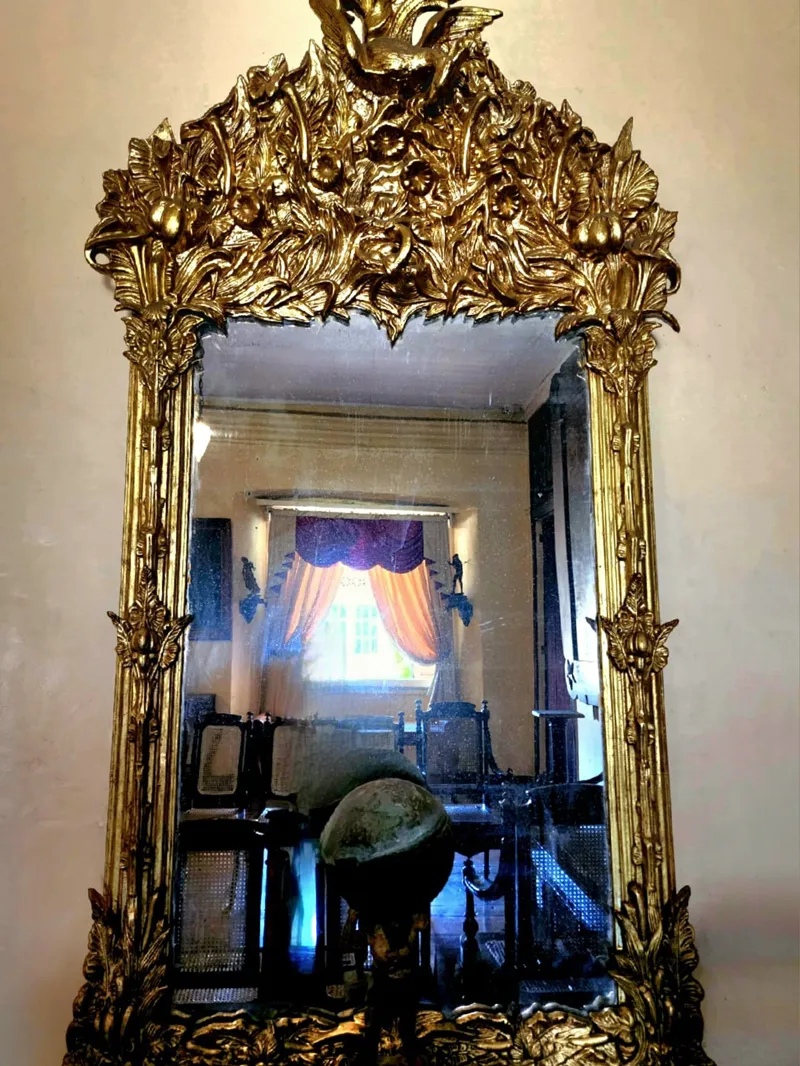


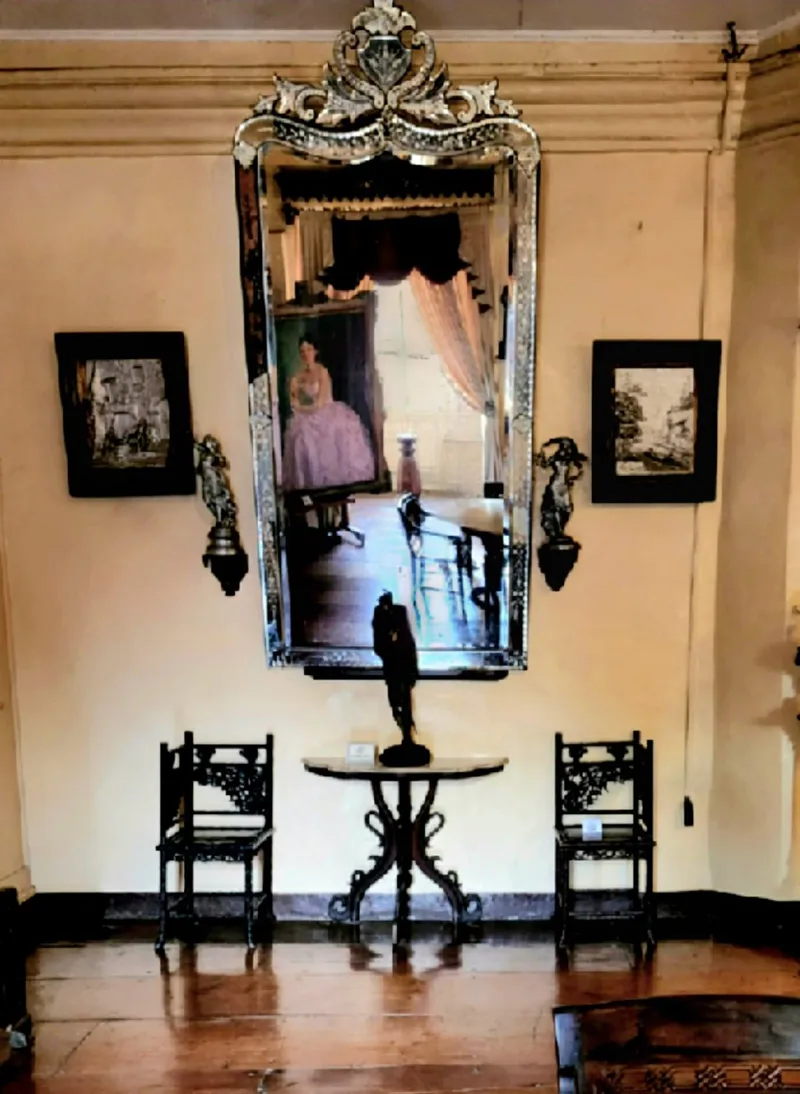
On the walls are replicas of paintings by Juan Luna, one of the recognized Filipino painters during the Spanish colonization era.
The Spoliarium which he painted in 1884, won a gold medal at the Exposicion de Bellas Artes in Madrid.
The duplicates were painted by Juan Luna’s understudy, Pedro Respal. The Spoliarium even had the signature of Juan Luna, as proof he was authorized to paint the replicas.
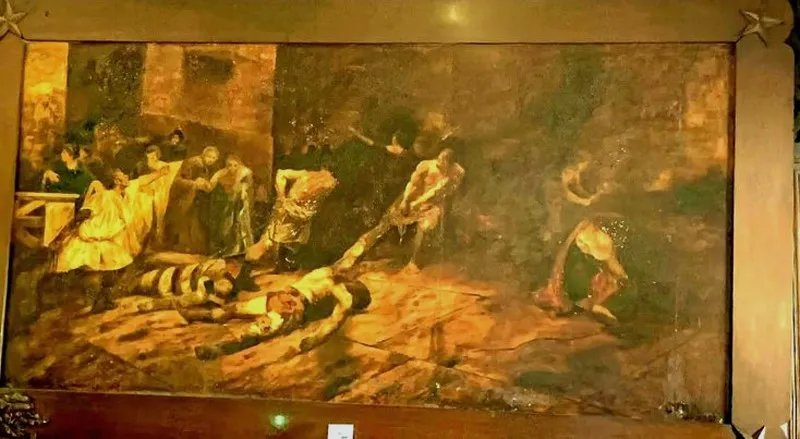

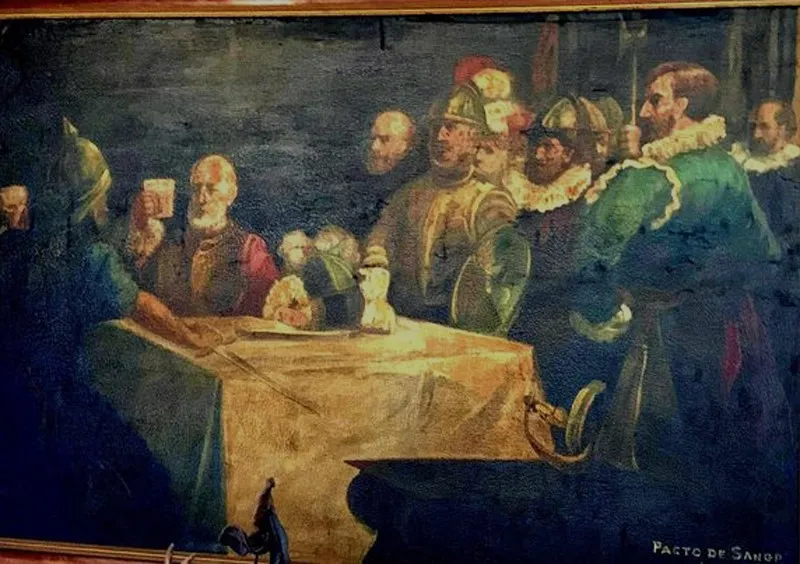
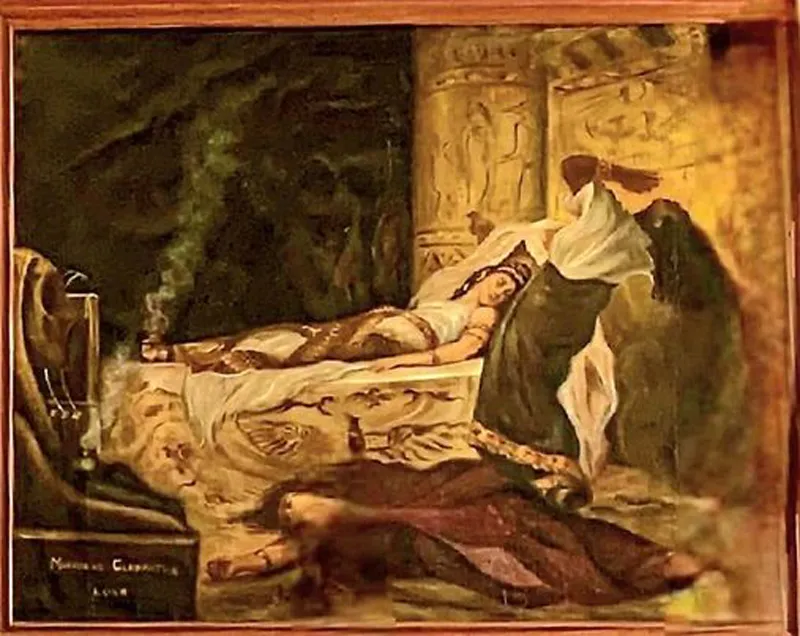
Million Peso Beds
These 19th-century European four-poster beds called Ah Tay have beautiful and intricate carvings. According to our guide, they are now worth millions but nobody wants to insure them for the reason that if they are damaged it would be very expensive to ship them to Europe and look for furniture makers/artisans to restore them to their original state.
The master of the house liked his bed big and in the European style but not so much for the size of the bedroom. The intricate carving is so amazing. The other pieces of furniture in the master bedroom have detailed and beautiful carvings as well.
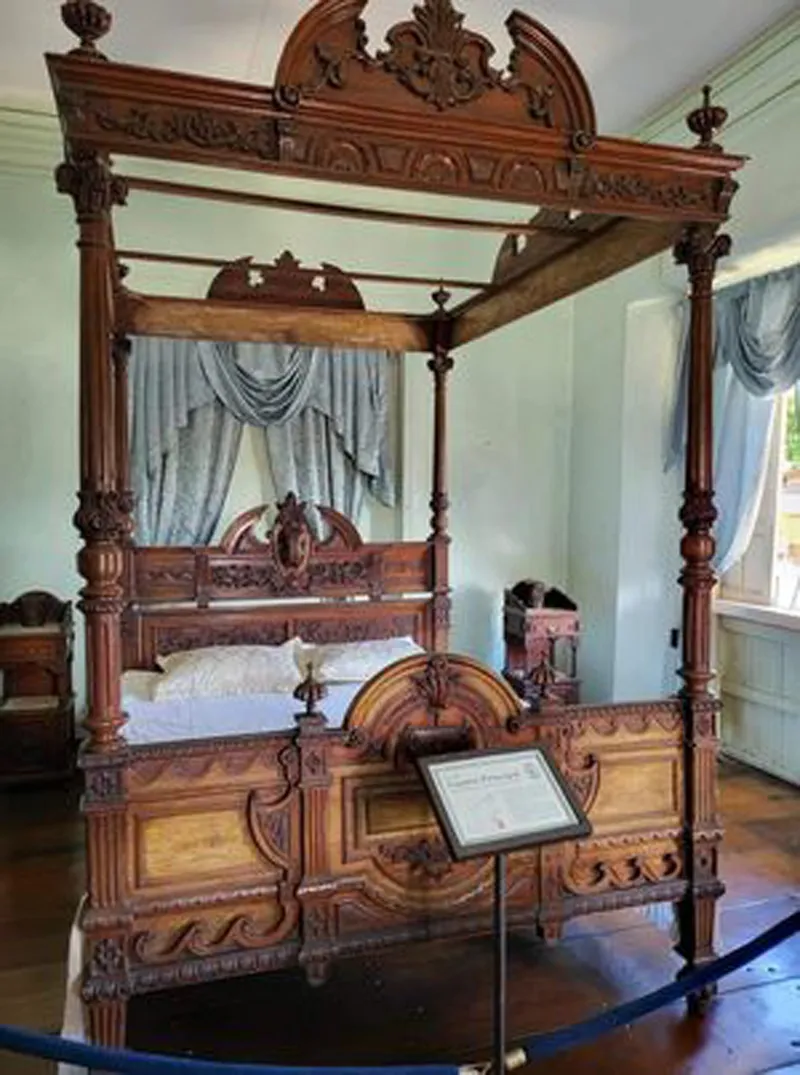
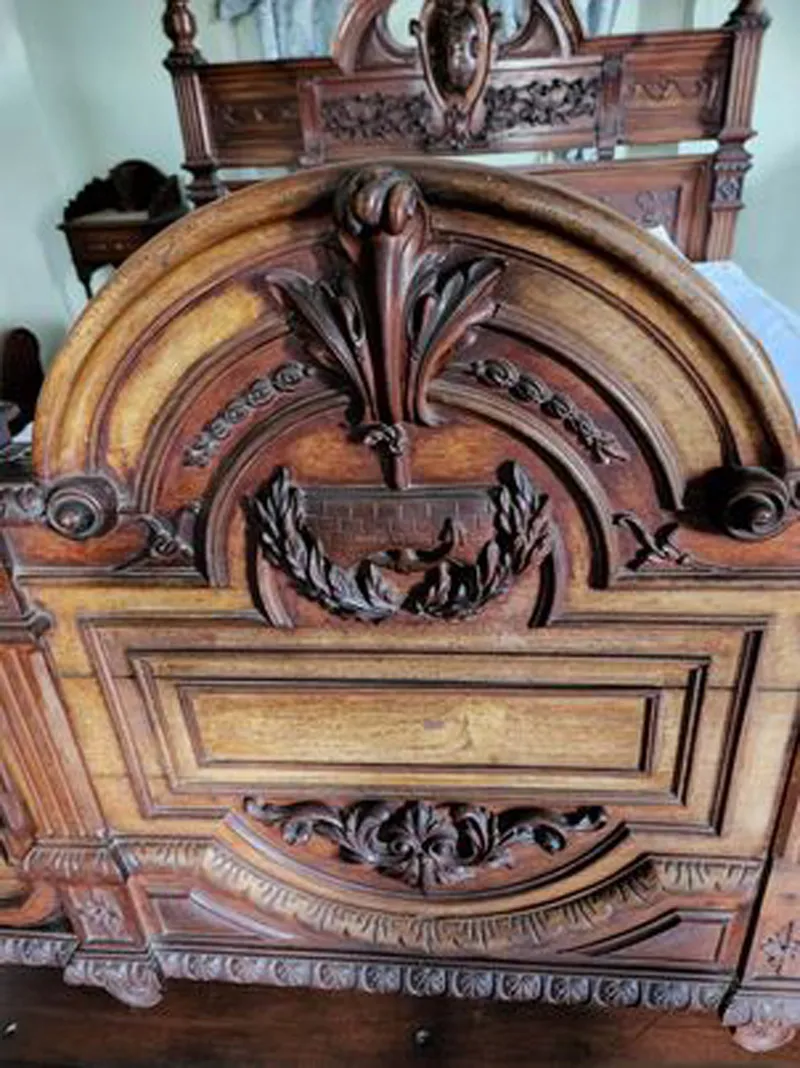

One peculiar thing about the intricate carvings on the bed are the small calabasas (squashes) They incorporated Chinese elements into the European style as a reminder of where they came from.
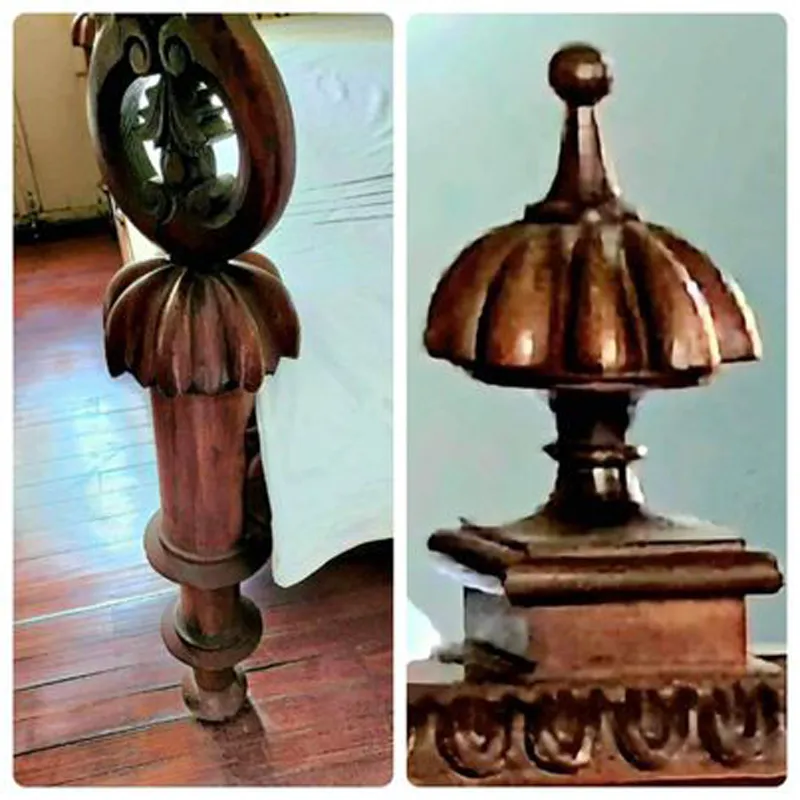
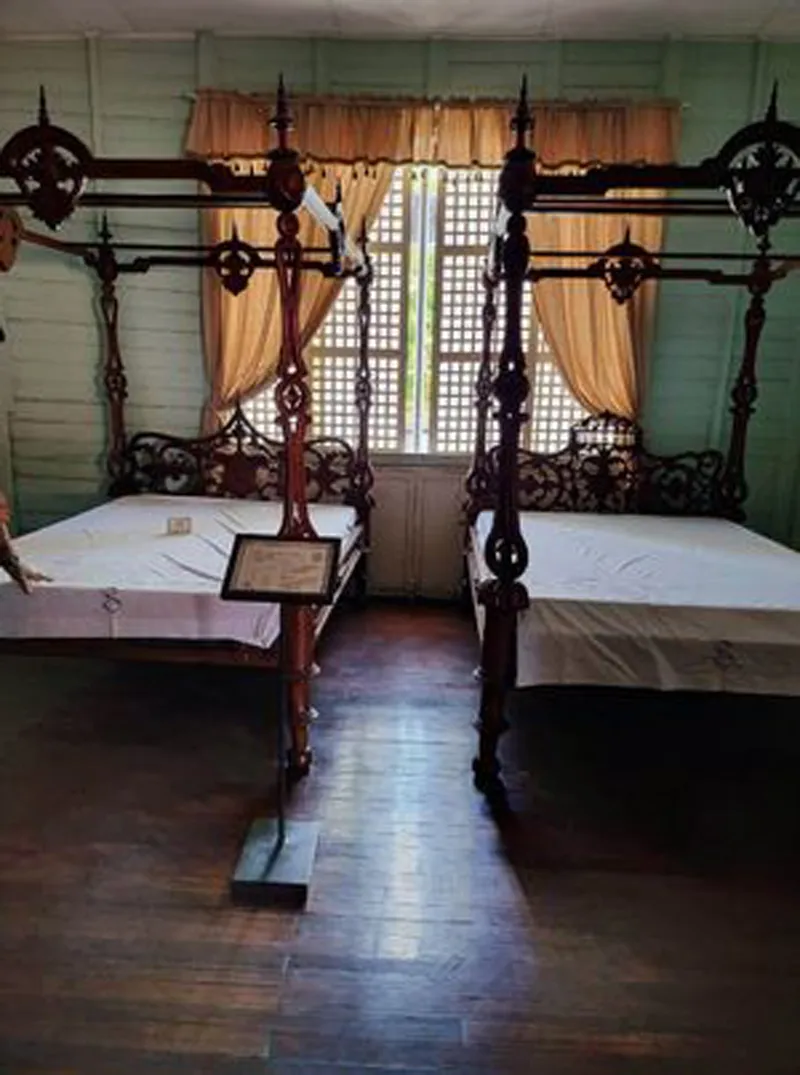
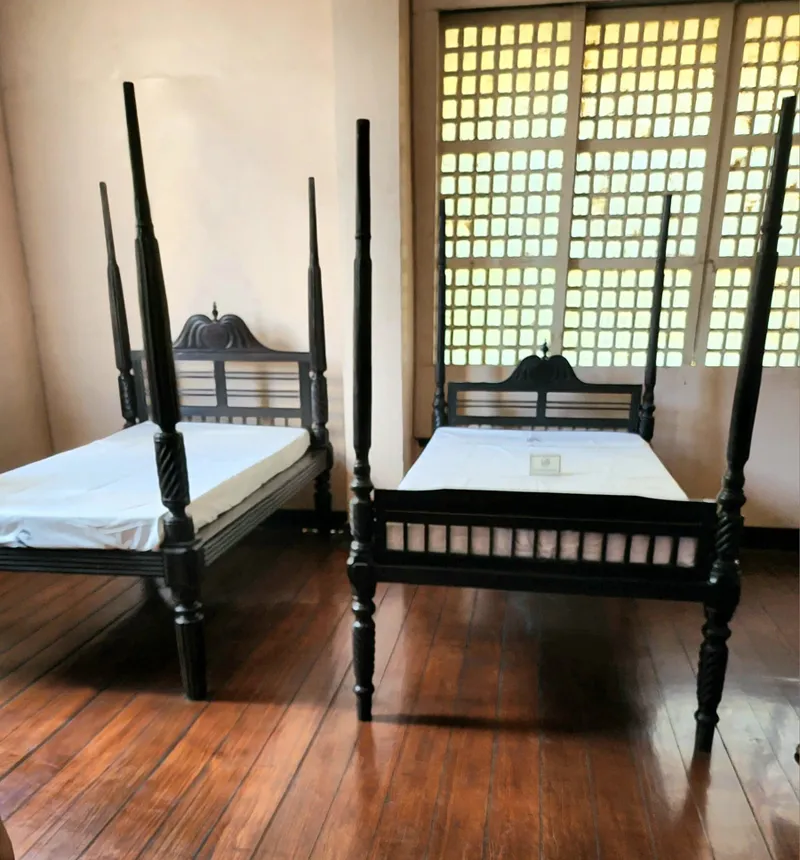
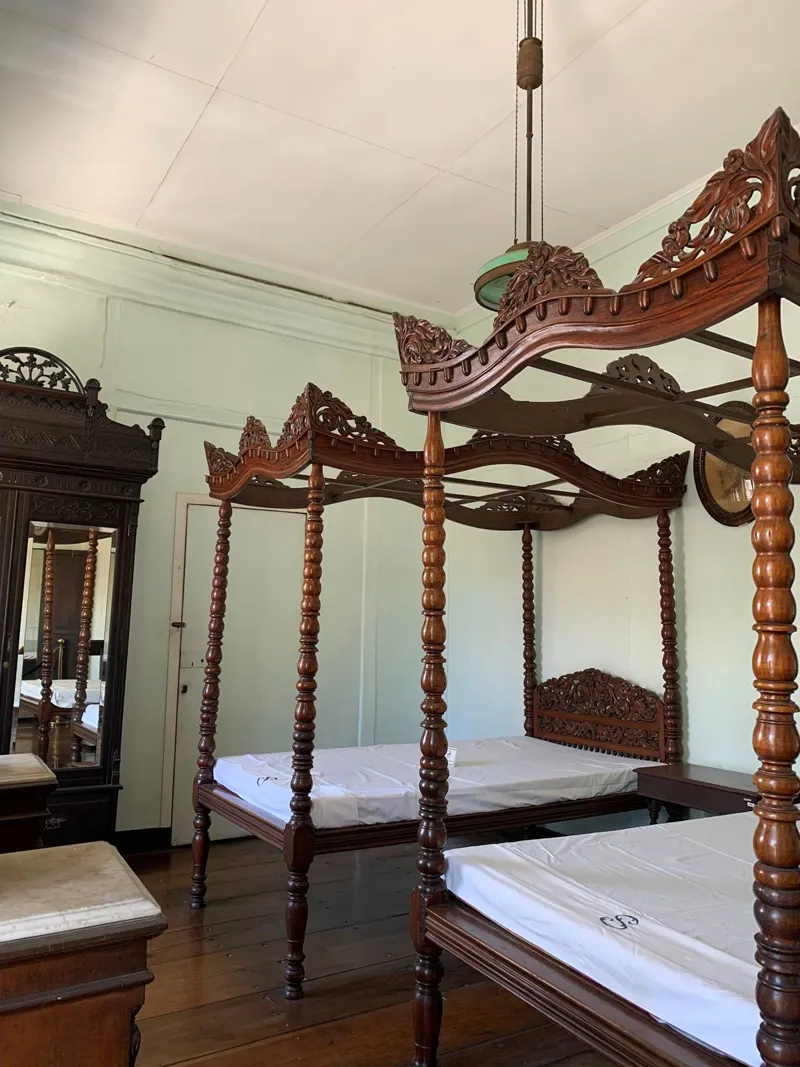
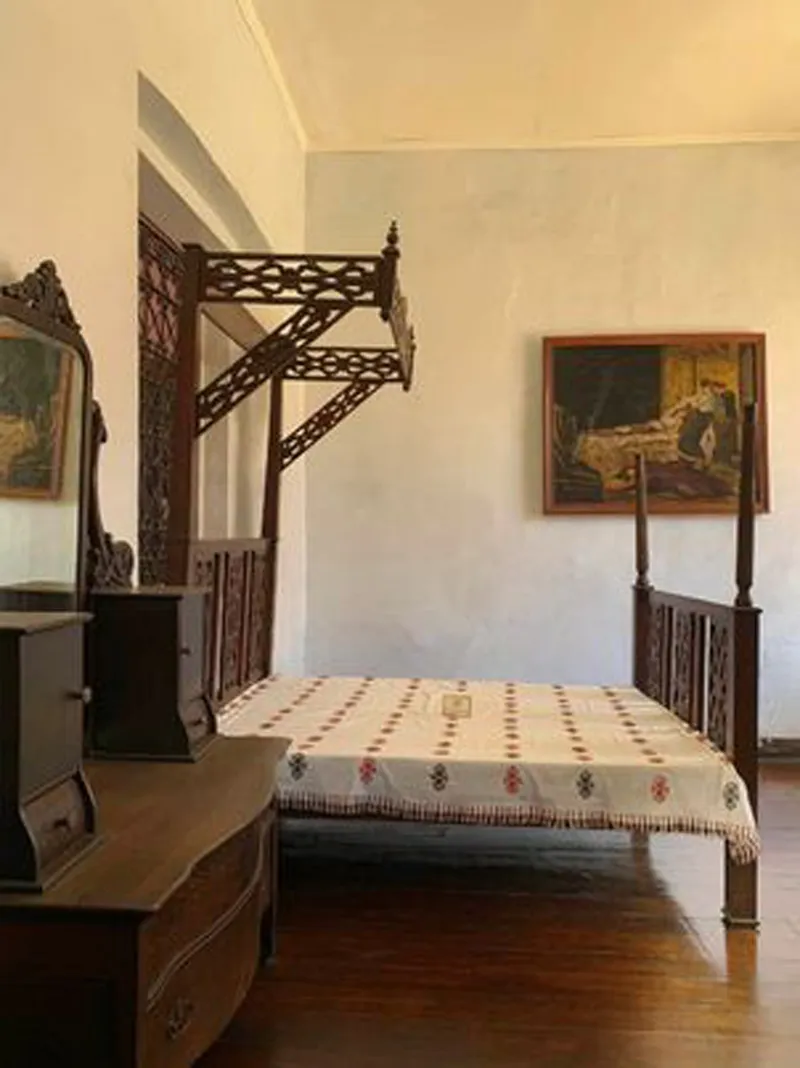
The Grand Dining Room
The dining room is as large as the main living room. There is a long table that seats 24 people. The curtains hanging on the ceiling served as fans to cool the room and drive away flies. They were operated manually by pulling the cords in another room. Why in another room? Because the servants were not allowed to be seen by the visitors.
During Elpidio Quirino’s presidency, the dining hall was used as a place for meetings with his cabinet members.
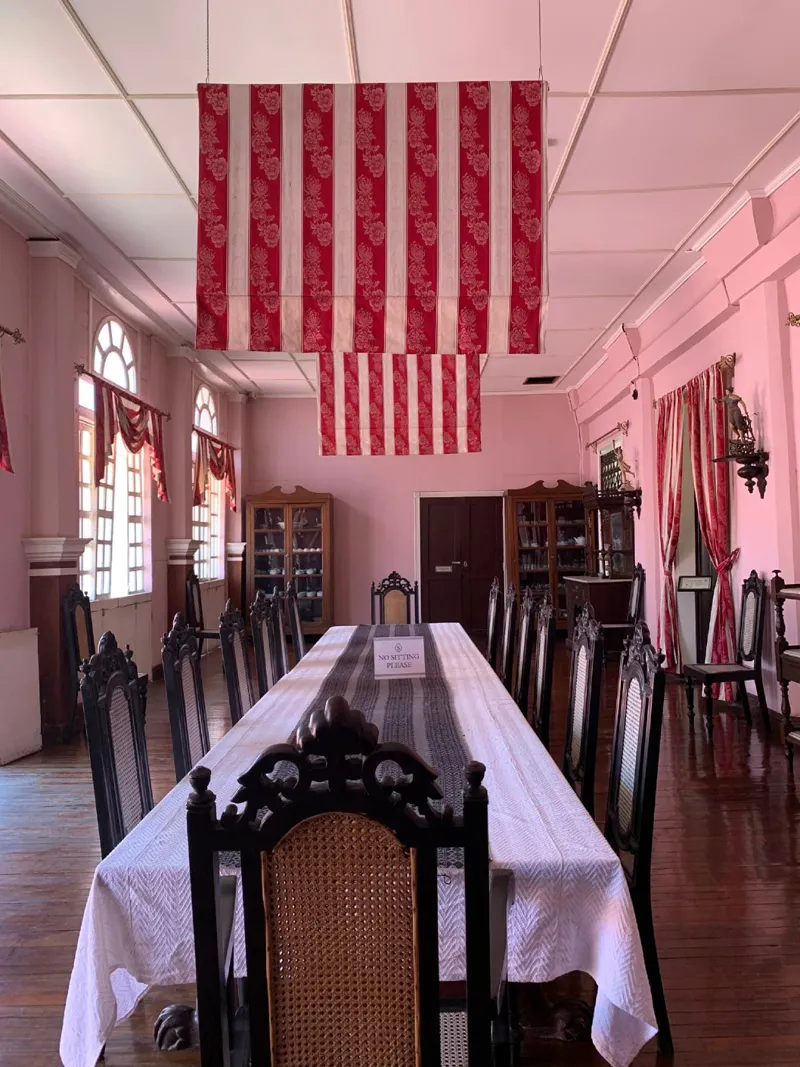
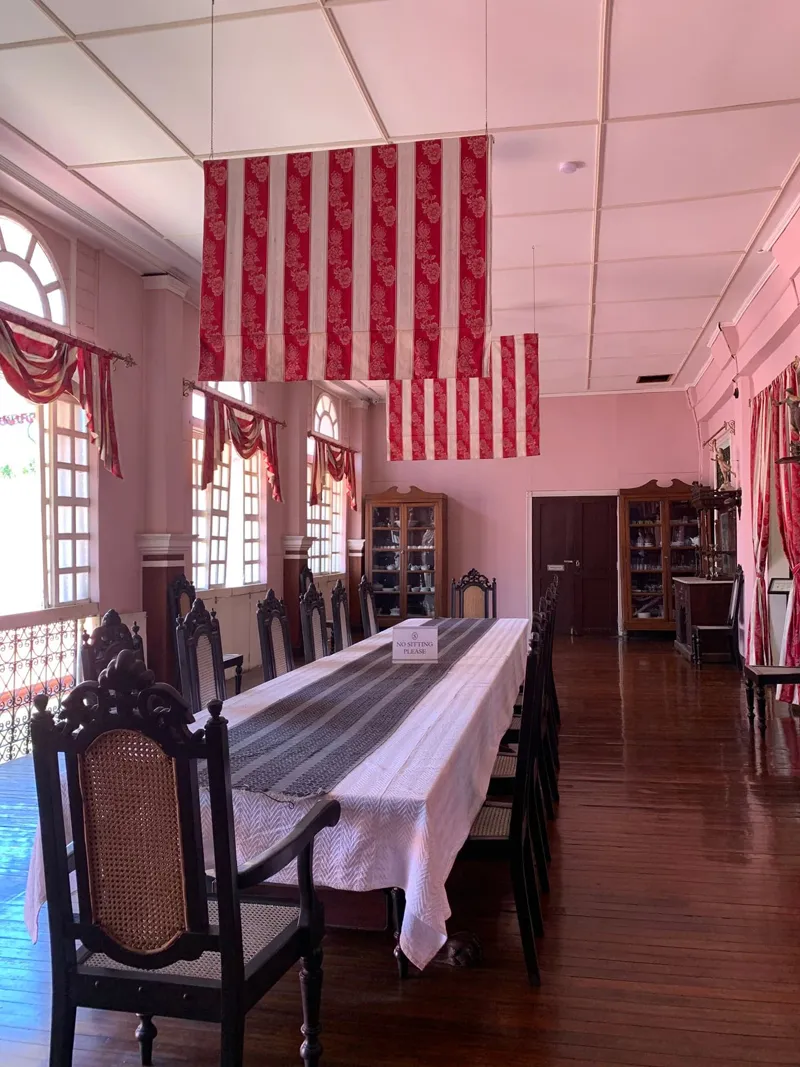
The Patio
The mansion opens to a central courtyard on the second floor with a fountain. The flooring has Machuca tiles with Mediterranean patterns. All around is planted with beautiful flowering plants It was an additional entertaining area when they hosted parties. This is another testament to the grandiosity of the Syquia mansion.
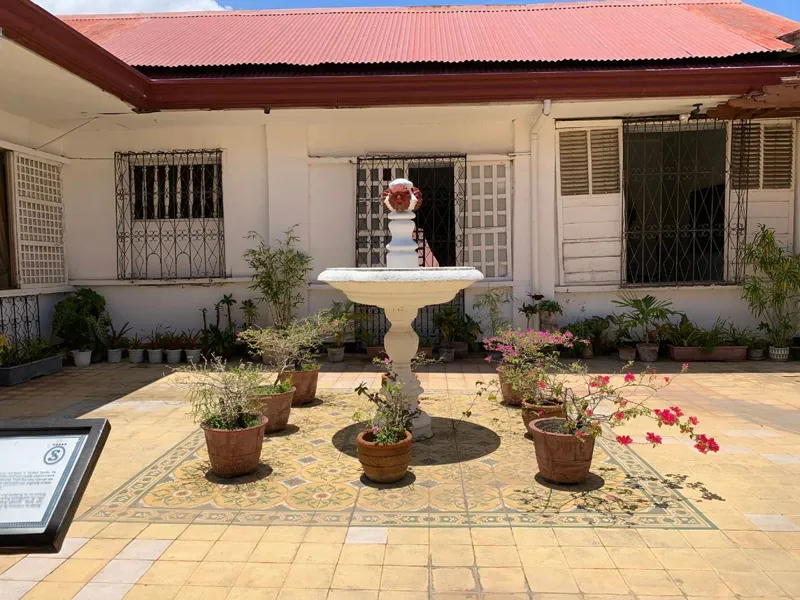
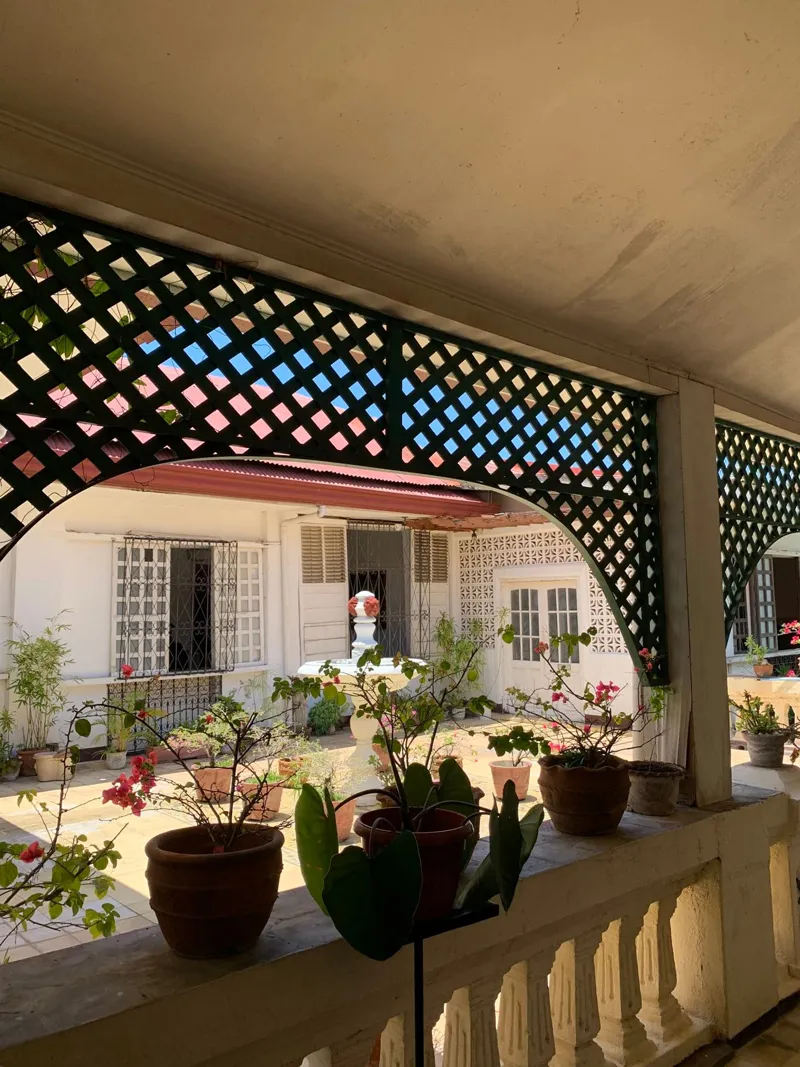
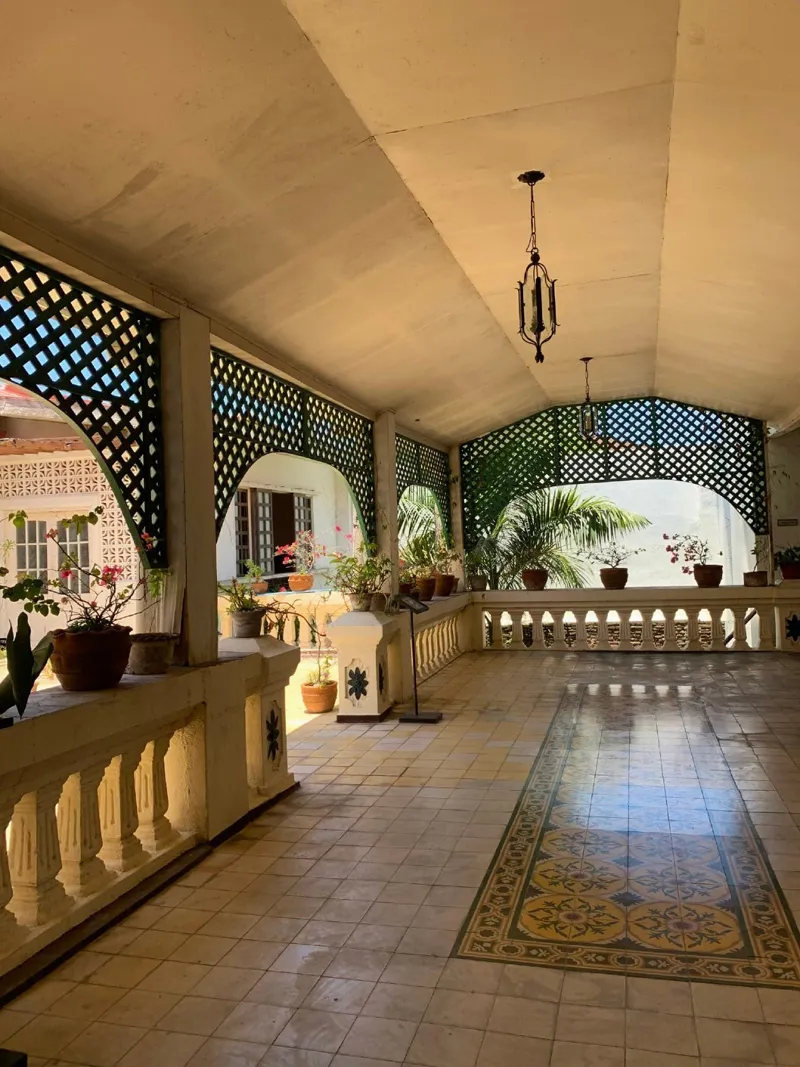
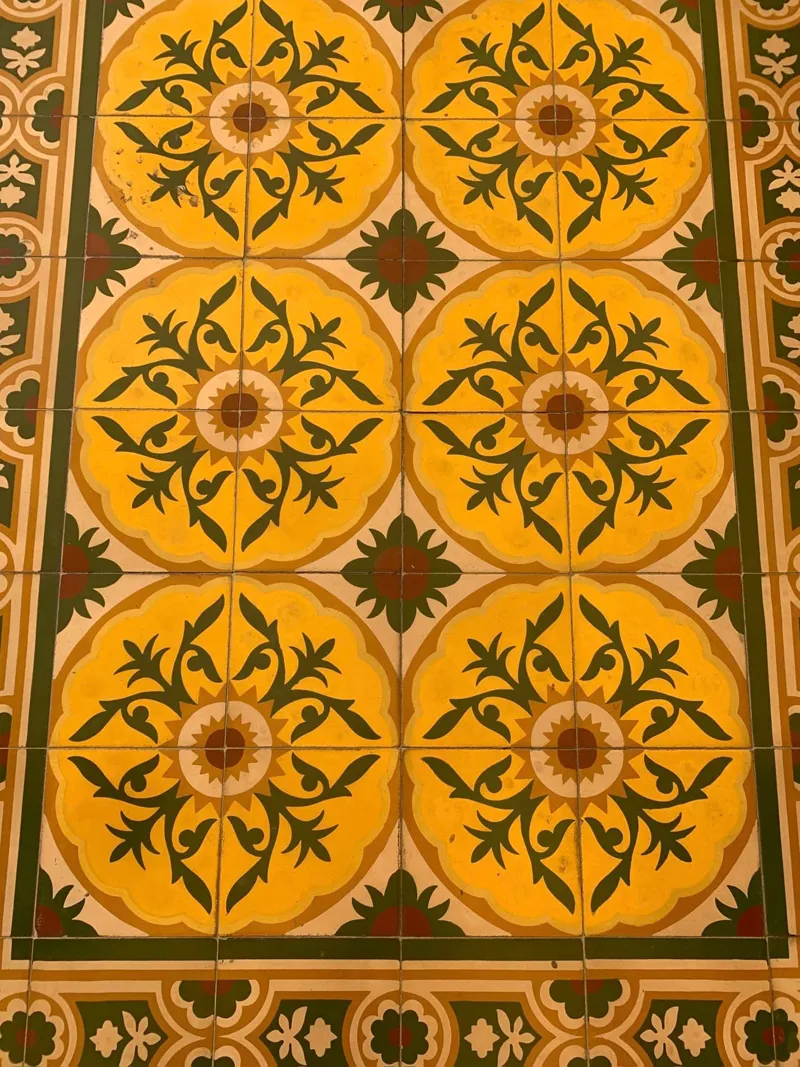
Stables and Well
At the back of the house is a stable for their horses. Horses were the mode of transportation in that era. The stable was also where guests tie their horses while they are visiting.
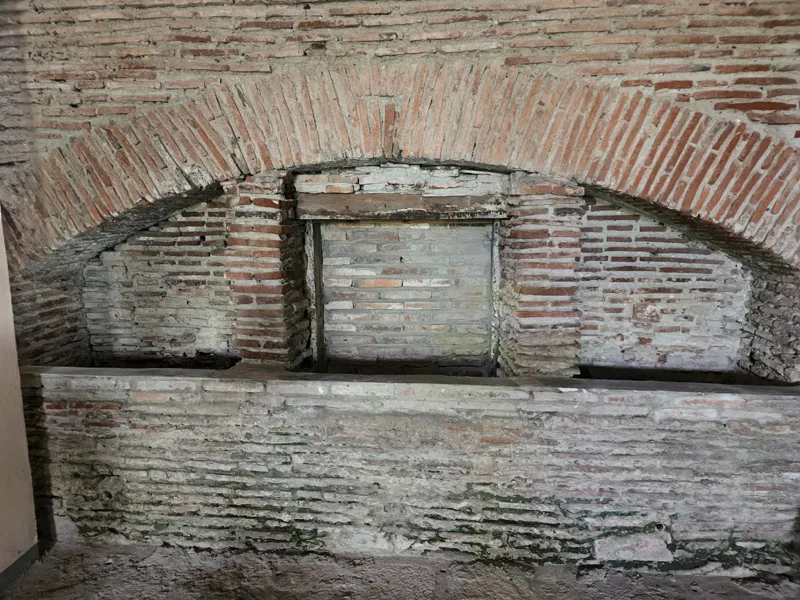
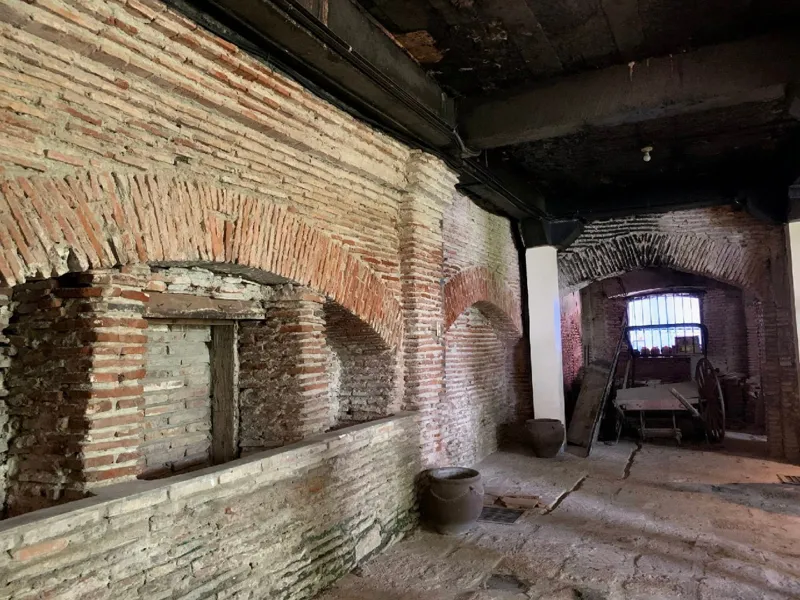
The deep well which was their source of water for drinking, bathing, and other purposes is still open to date, even with the modern source of water supply. According to our tour guide, this deep well and all others that were installed in other areas have to remain open because closing them will adversely affect the current water system of the entire city of Vigan.
